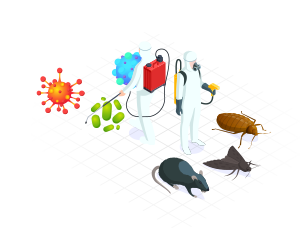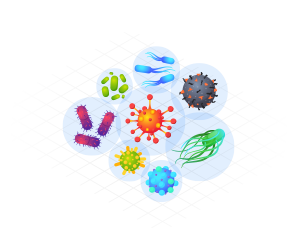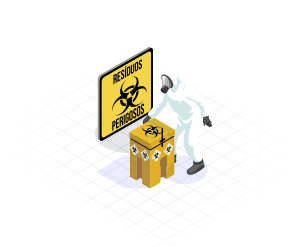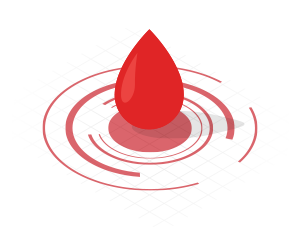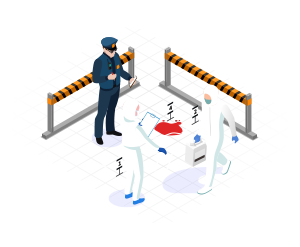


taboo, unfortunately for others it is something they have already experienced. But most of us only see these types of situations on TV.
Series such as “CSI” show us a little of the post-mortem activity that takes place. Police, firefighters, investigators and forensic doctors are present at the scene of the incident, assessing the victim, investigating the scene, collecting evidence and, finally, the body is removed.
cleaning and disinfection

Regardless of the cause, cleaning up after a traumatic death is not only a potentially horrific task, it also requires very specific training and special knowledge to do the job correctly, something that is dangerous, tiring and can traumatize people with “weak stomachs”.

As a rule, cleaning, disinfecting and restoring a place where an incident of this kind occurred can take on average several hours, usually reaching one or more days of work, a very precise, meticulous and careful job, as no evidence, trace or memory of what happened there can remain.

Disinfecting and cleaning a crime or trauma scene involves cleaning high-risk, biologically contaminated areas, restoring the site, returning everything to the way it was before the incident, sparing the family from this traumatic intervention.
DIFFERENT SCENARIOS

Each scenario, death, location or other factors differ from case to case, although they are similar, they all differ in several points. Cleaning up a violent scene, such as in cases of suicide usually by firearm, leaves a visibly disturbing and traumatic image at the scene, with lots of blood on the floor, walls, ceiling and all the furniture, requiring a lot of time for cleaning, disinfection and a very precise and thorough inspection of each space.

Associated with all this arduous and time-consuming work, there is the psychological factor that will have to be emotionally stable to always maintain the high level of professionalism required, something that we cannot ask of the family, because if they decide to carry out the cleaning, their emotional side will be the first factor to emerge and all the trauma associated with the task will forever affect the family member exposed to such conditions.
RELATED INFORMATION

Intervention in places of death
Cleaning up a crime and trauma scene is directly related to death, which for many is still a taboo subject, but unfortunately for others it is something they have already experienced. However, most of us only see these types of situations on TV.
Series such as “CSI” show us a little of the post-mortem activity that takes place. Police forces, firefighters, investigators and forensic doctors are present at the scene of the incident, assessing the victim, investigating the site, collecting evidence and, finally, the body is removed. What is rarely shown on TV is what happens after this, when all the professionals leave, leaving the scene in the hands of the family as it was left. This is when the family members are faced with a place still covered in blood, full of biological traces, facing a traumatic perspective of the entire scene. One thing that these professionals do not do is clean the scene and all the traces present! Removing the traces left by a death is the responsibility of the owners of the premises, often the victim’s family, so it is the family members who will have to carry out the cleaning, an almost unimaginable and traumatic task.
In the late 1990s, a new industry was born in the United States of America under the name of Crime Scene Cleanup – Crime Scene Cleaners (Crime Scene Cleanup). It is currently called CTS Decon or Biorecovery (Decontamination & Cleaning of Crime and Trauma Scenes – Bioremediation), since most of the cases that occur are not crimes but suicides, natural or accidental deaths or decompositions.
In Portugal this pioneering service emerged in 2008, with the creation of DEATHCLEAN®, the first and currently the only accredited company in Europe.

cleaning and disinfection
Regardless of the cause, cleaning up after a traumatic death is not only a potentially horrific task, it also requires very specific training and special knowledge to do the job correctly, something that is dangerous, tiring and can traumatize people with “weak stomachs”.
As a rule, cleaning, disinfecting and restoring a place where an incident of this kind occurred can take on average several hours, usually reaching one or more days of work, a very precise, meticulous and careful job, as no evidence, trace or memory of what happened there can remain.
Disinfection and cleaning of a crime or trauma scene involves cleaning up biologically contaminated, high-risk areas and restoring the site to the way it was before the incident, sparing the family from having to go through this traumatic intervention. When these types of situations occur, our technicians’ job is to completely remove any trace of what tragically happened and any biological hazards present, such as blood, other bodily fluids or human tissue, are considered to be a dangerous source of infection.
Very specific training and education is required for this type of cleaning, so that all traces can be safely collected and the entire area to be restored can be properly checked. All technicians at DEATHCLEAN® have these qualifications, certifications and extensive experience to deal with the cleaning of these scenarios, as this is the only way this type of service can be carried out with a complete guarantee of success.
The place where a death occurred has immense dangers that few people know about or are aware of the true risk. In addition to the danger of collecting biological risk waste, any bodily fluid or trace that is “forgotten” due to incorrect cleaning of the place will cause serious health problems for the residents of the home. The entire place must be truly clean and not just apparently clean.


DIFFERENT SCENARIOS
Each scenario, death, location or other factors differ from case to case, although they are similar, they all differ in several points. Cleaning up a violent scene, such as in cases of suicide usually by firearm, leaves a visibly disturbing and traumatic image at the scene, with lots of blood on the floor, walls, ceiling and all the furniture, requiring a lot of time for cleaning, disinfection and a very precise and thorough inspection of each space.
Associated with all this arduous and time-consuming work, there is the psychological factor that will have to be emotionally stable to always maintain the high level of professionalism required, something that we cannot ask of the family, because if they decide to carry out the cleaning, their emotional side will be the first factor to emerge and all the trauma associated with the task will forever affect the family member exposed to such conditions.
In cases of natural deaths, known as decomposition, there is usually not as much blood present or projected onto surfaces, but rather a large concentration of bodily fluids, which can sometimes be even more shocking than in cases of homicide or suicide. A human body that has been decomposing for several days, weeks or even months always goes through immense transformations, and after death the body begins to decompose, releasing fluids and an intense odor that attracts many insects.
It is an unpleasant environment, where the worst is the bad odor coming from decomposition, which even after the body has been removed persists with some intensity, a very characteristic smell that requires cleaning and disinfection work, followed by purification and deodorization of the place and sometimes the entire house.




